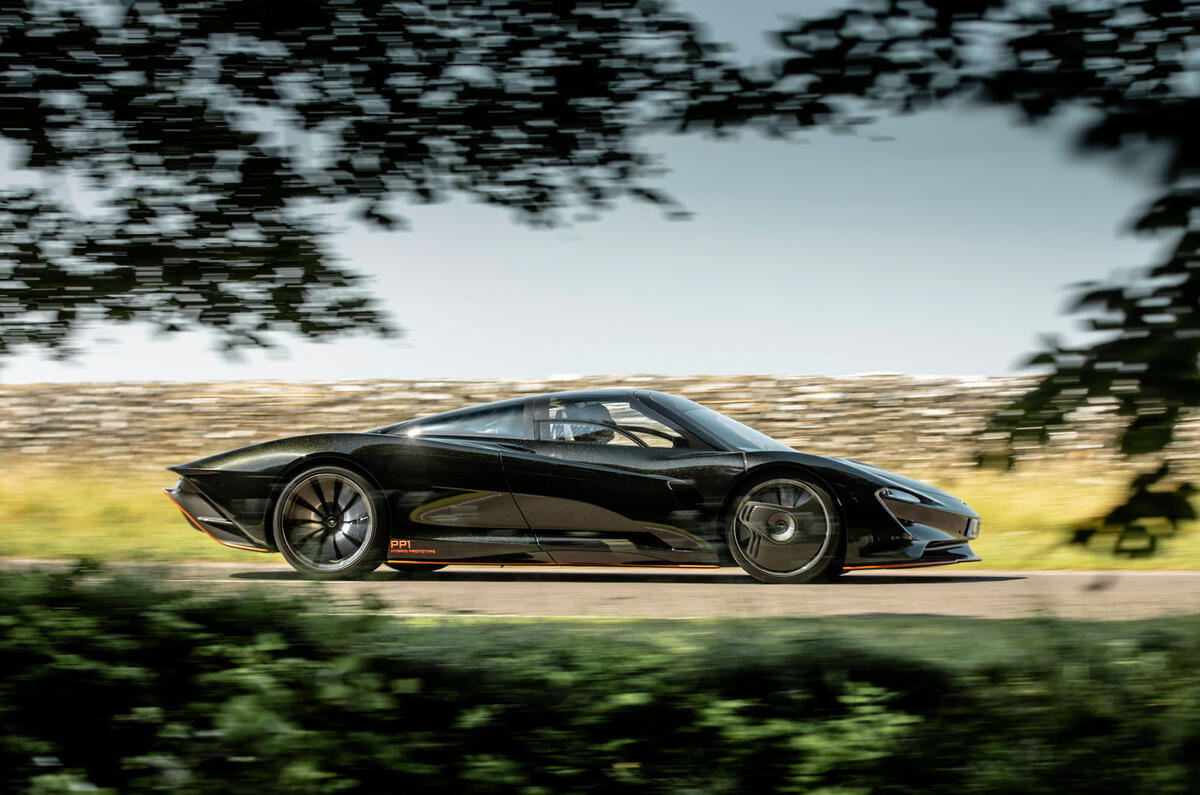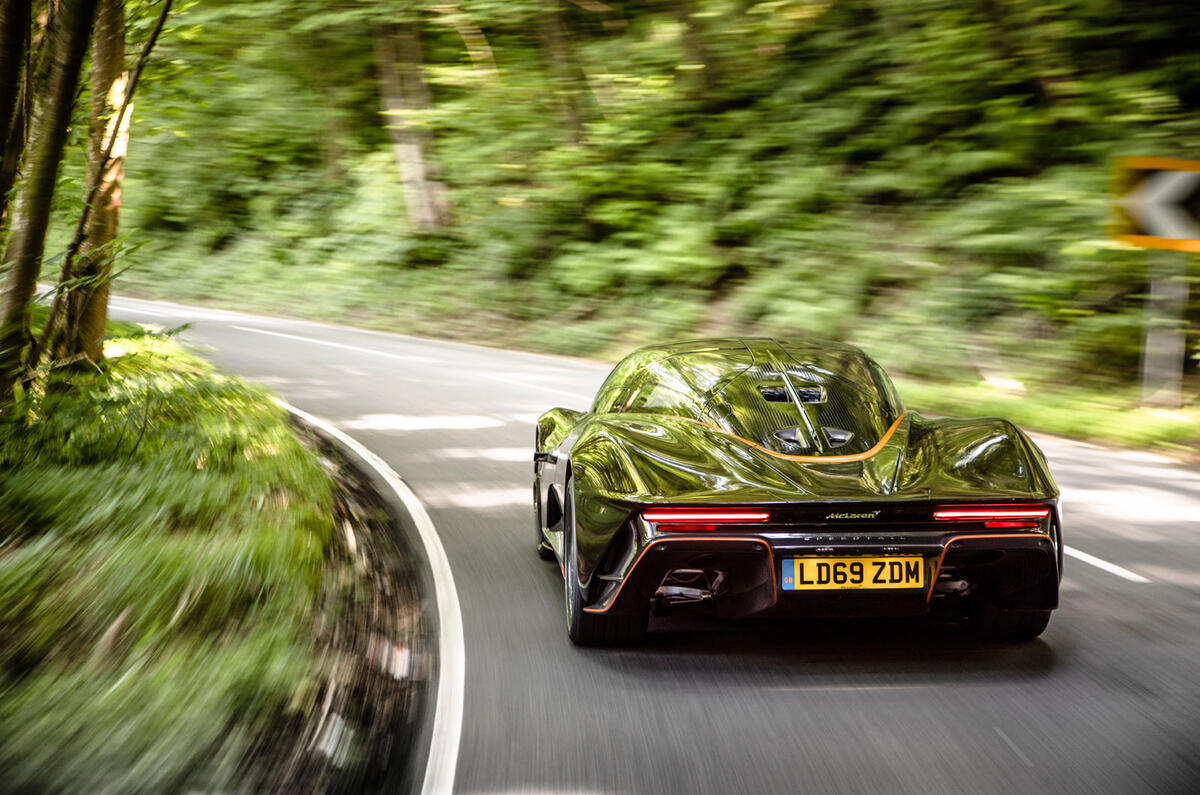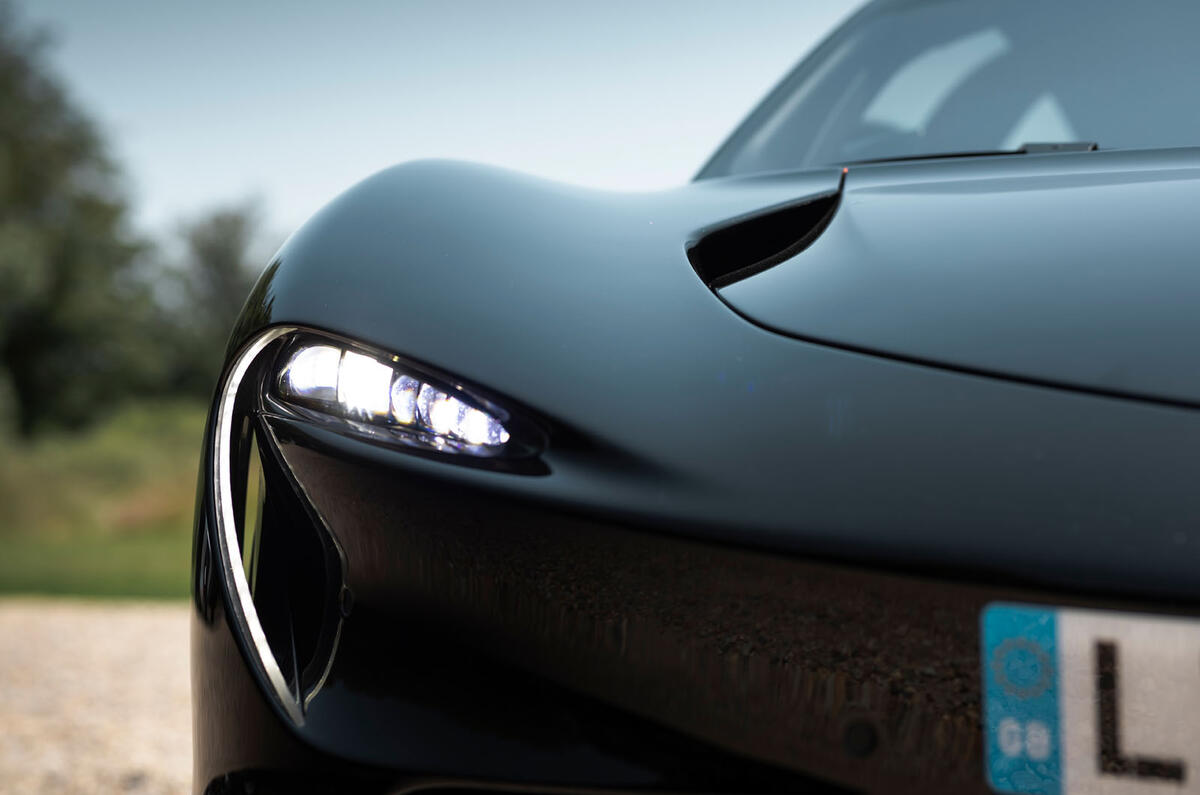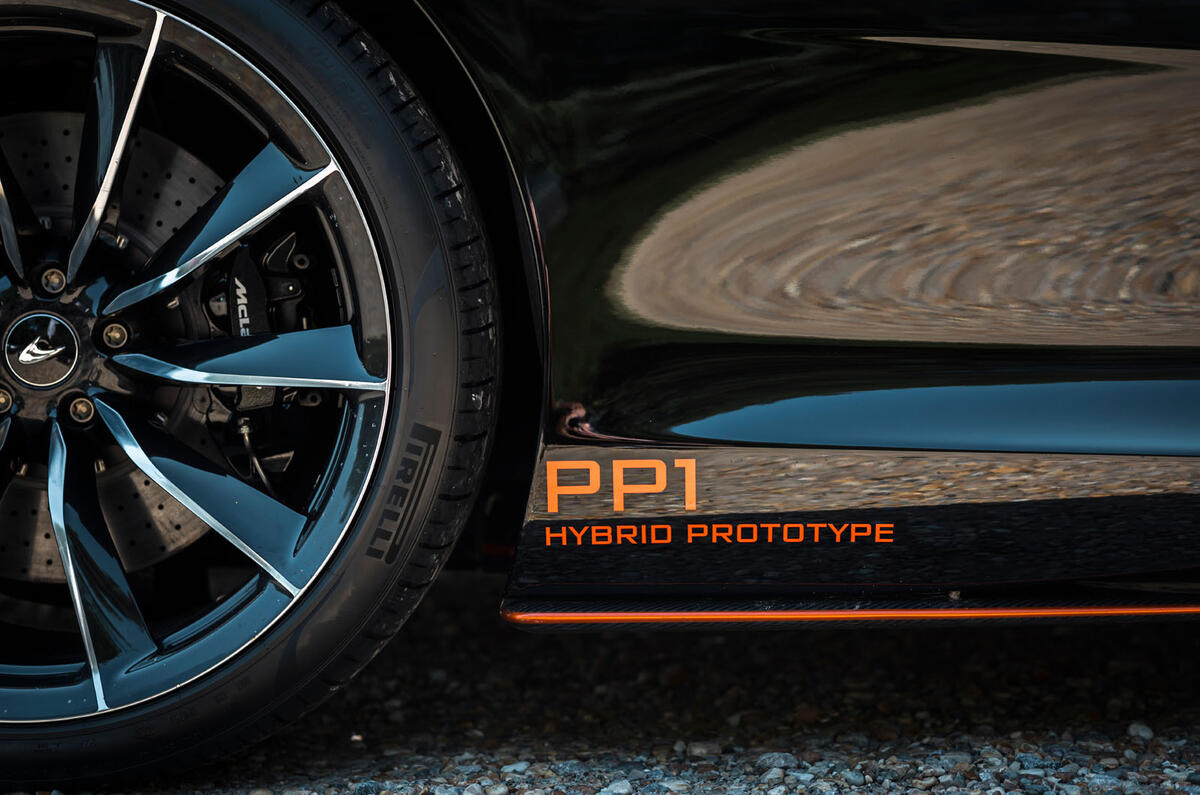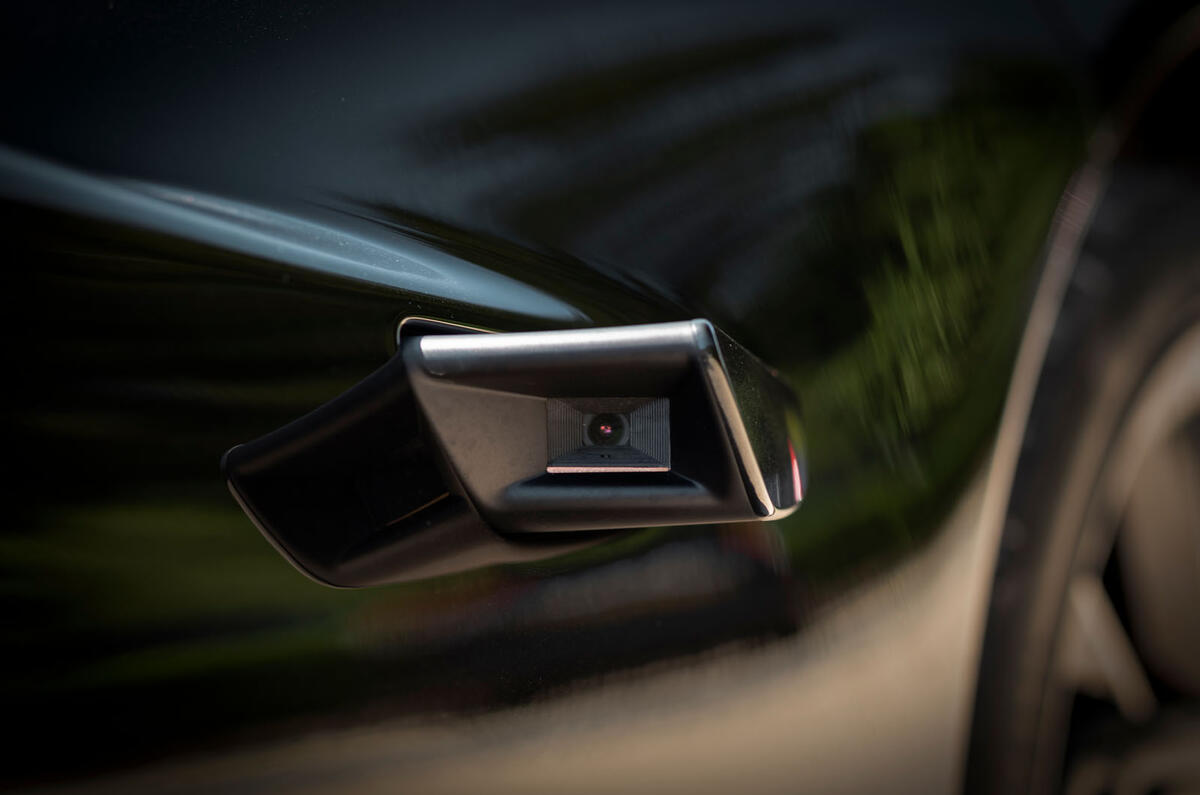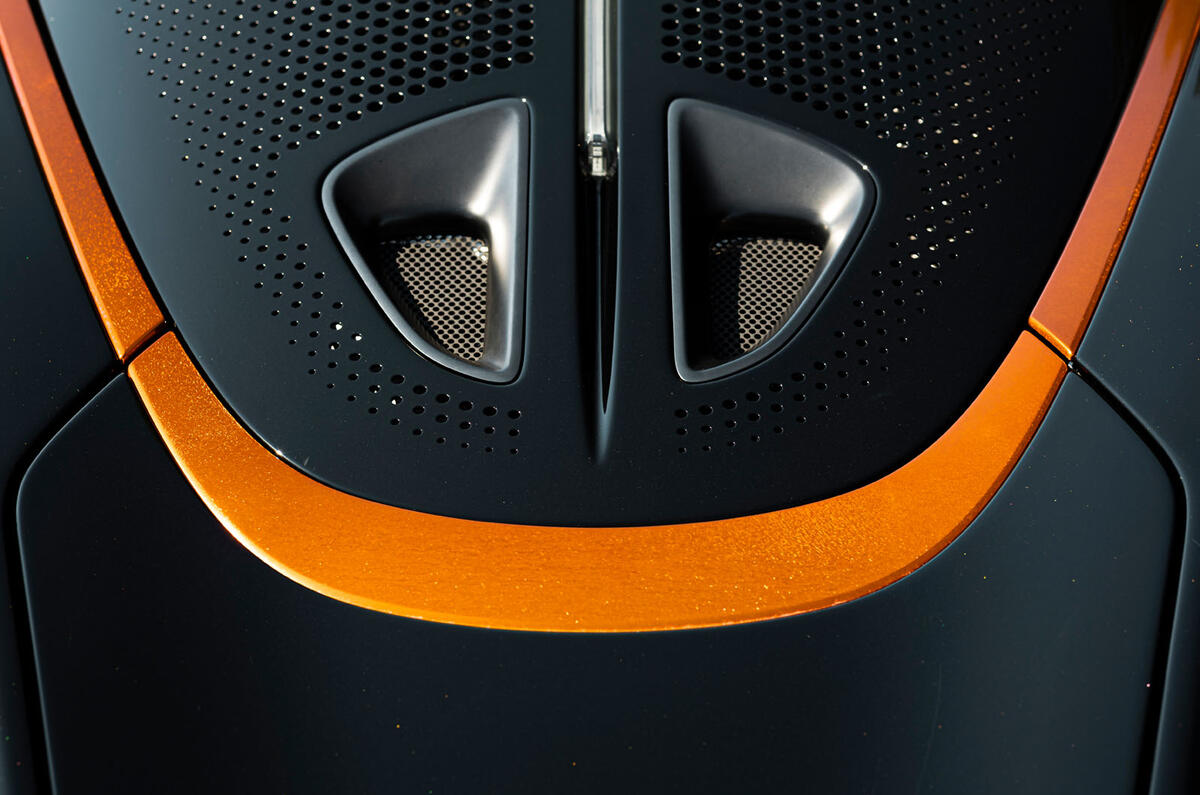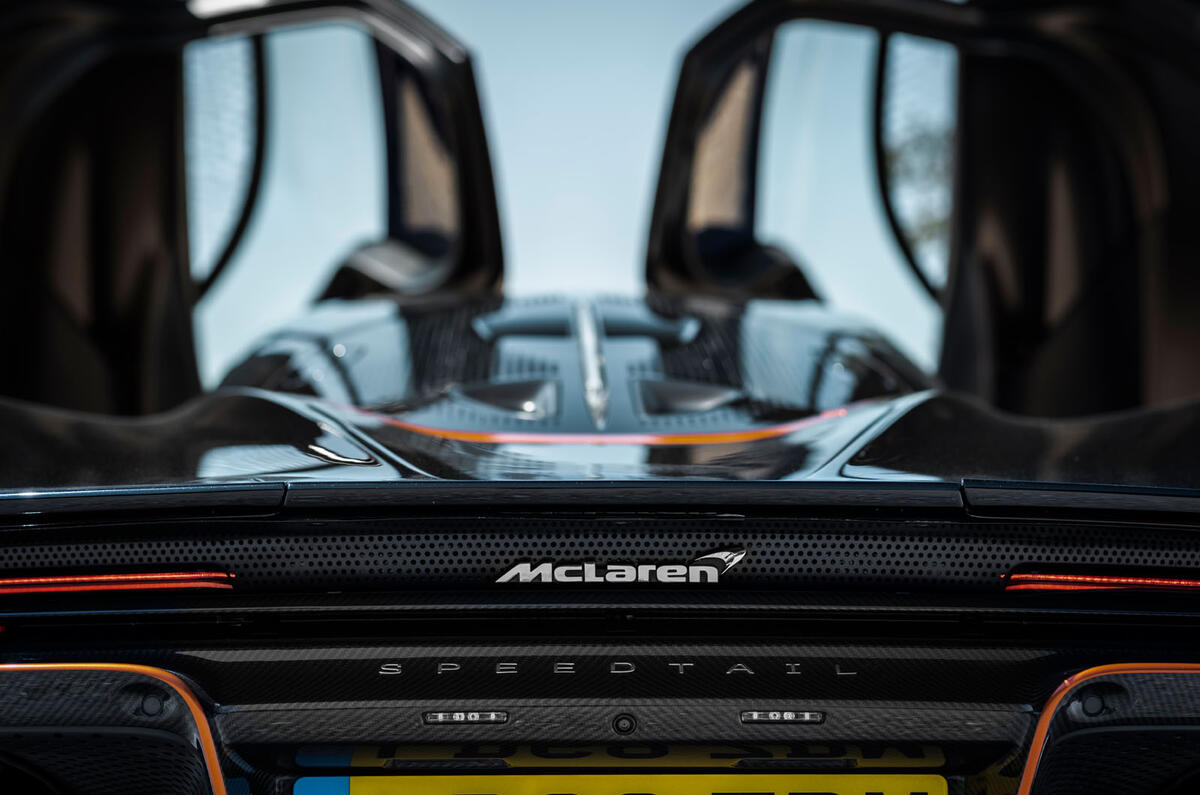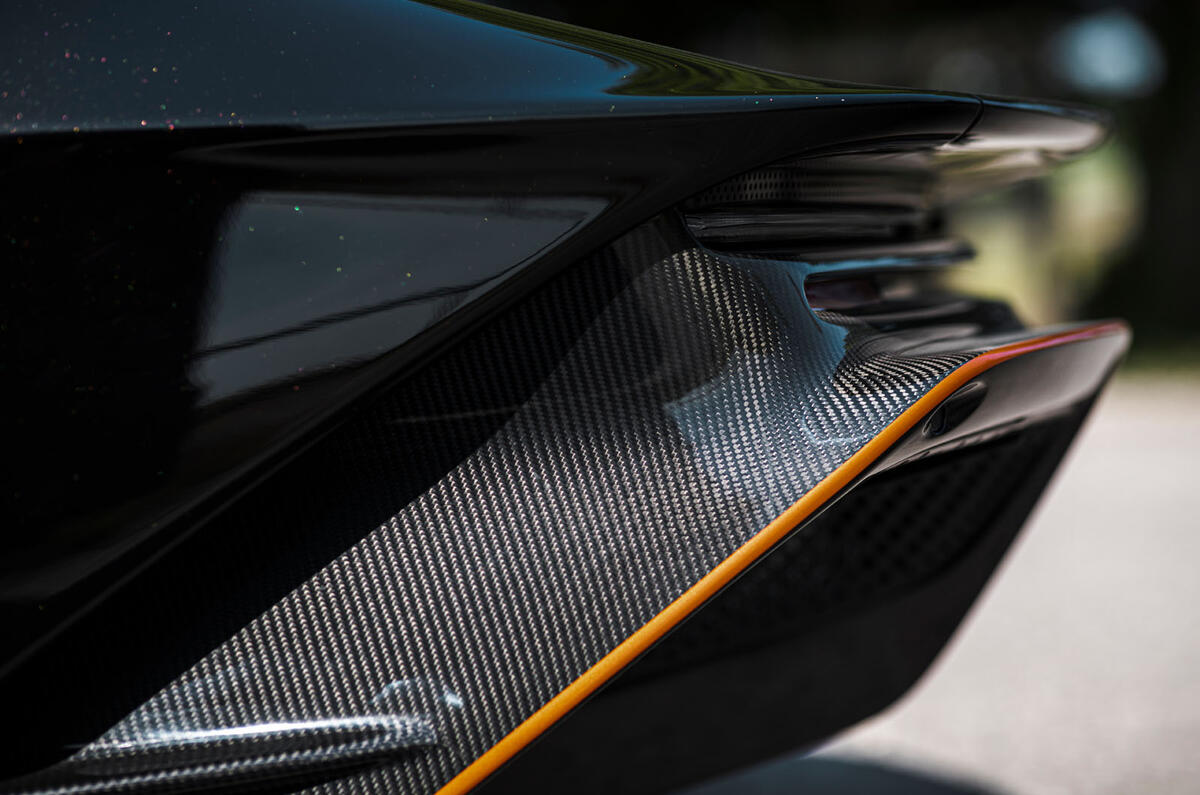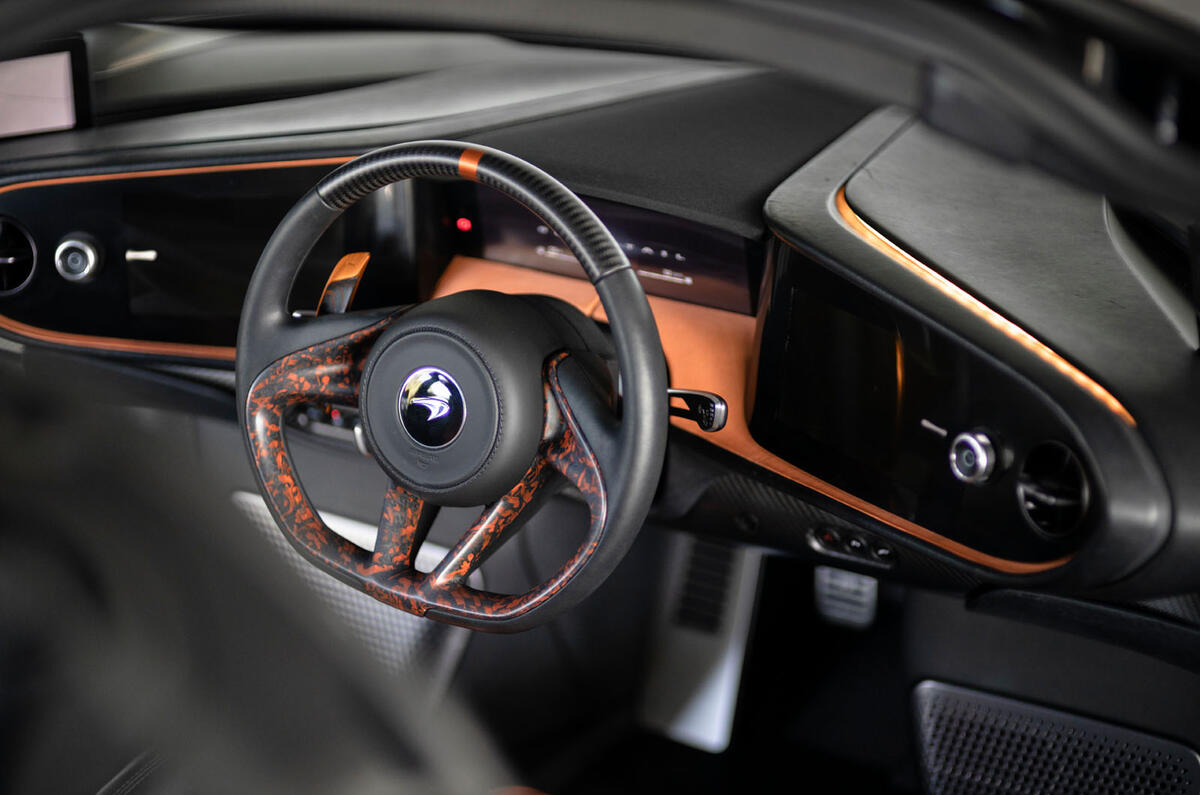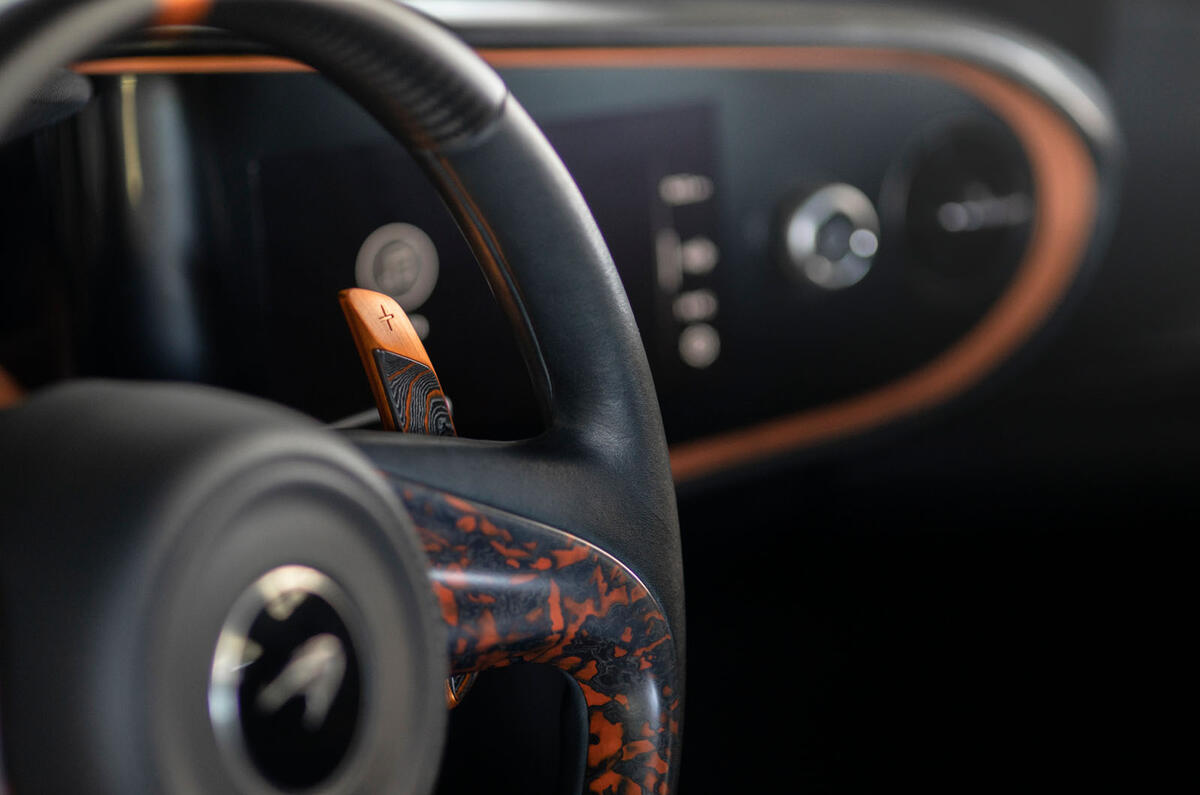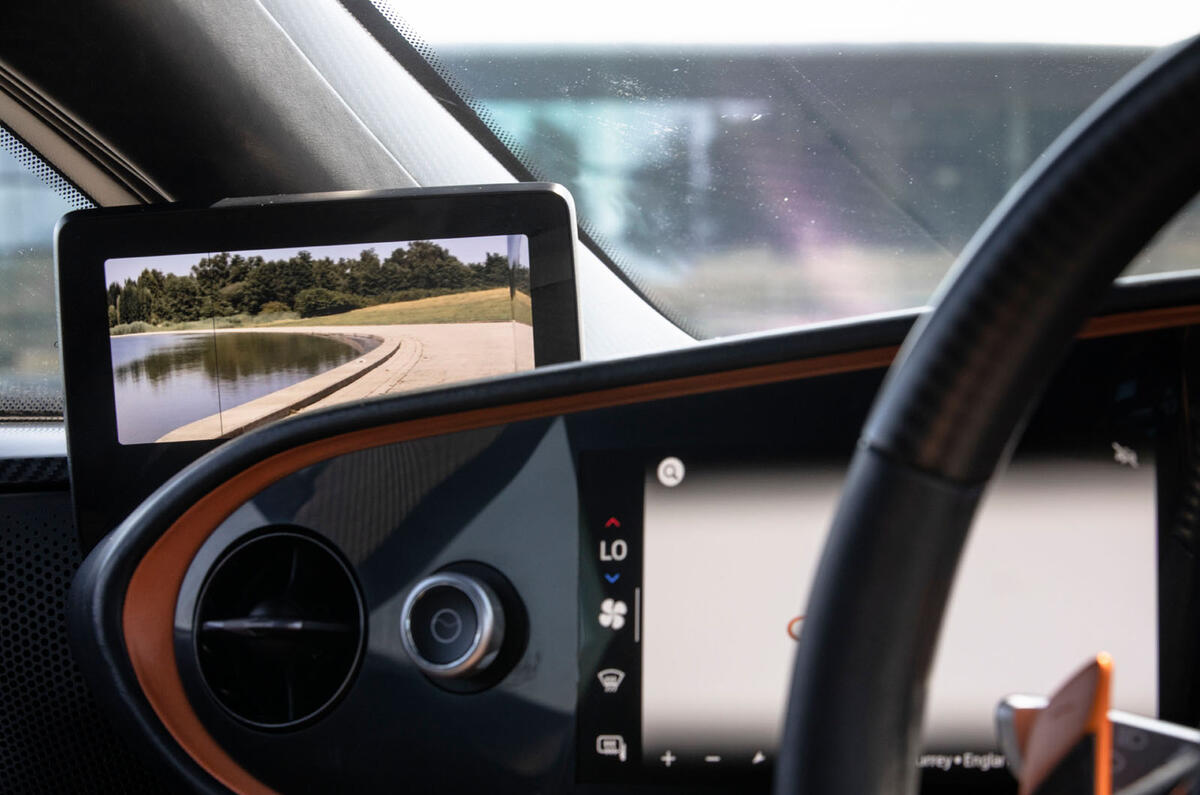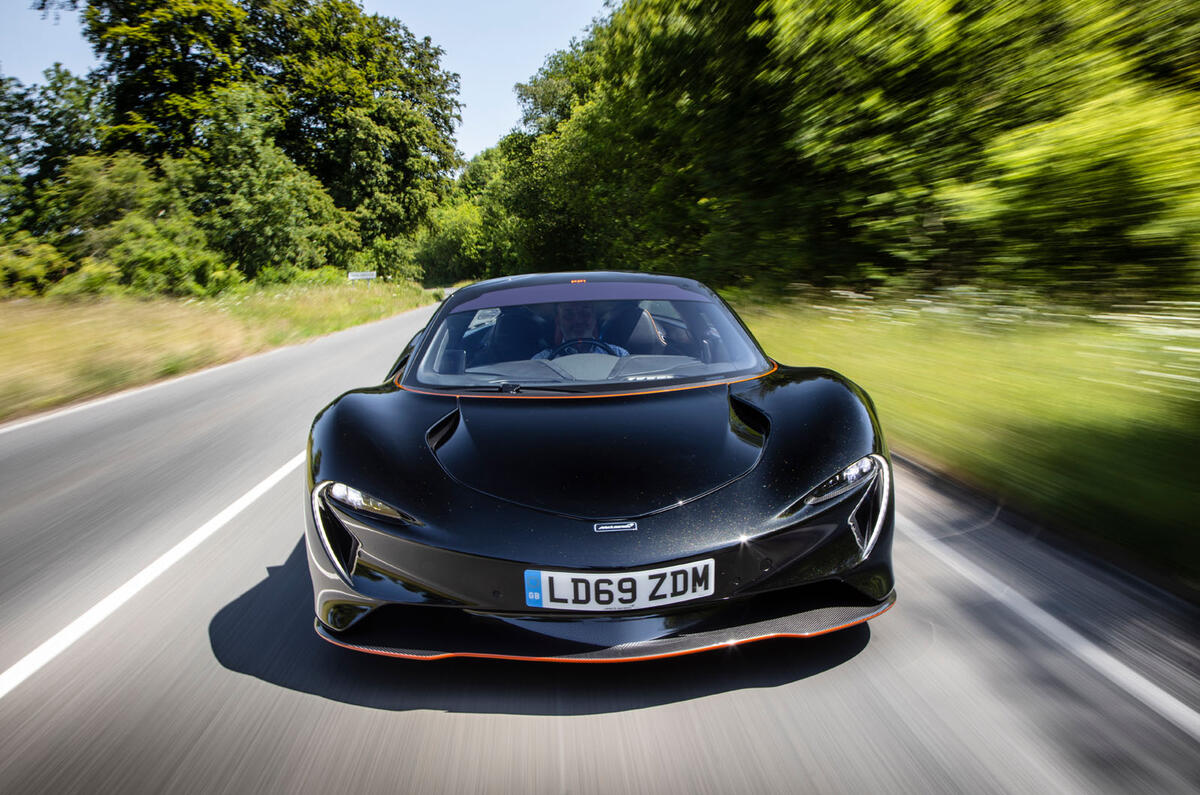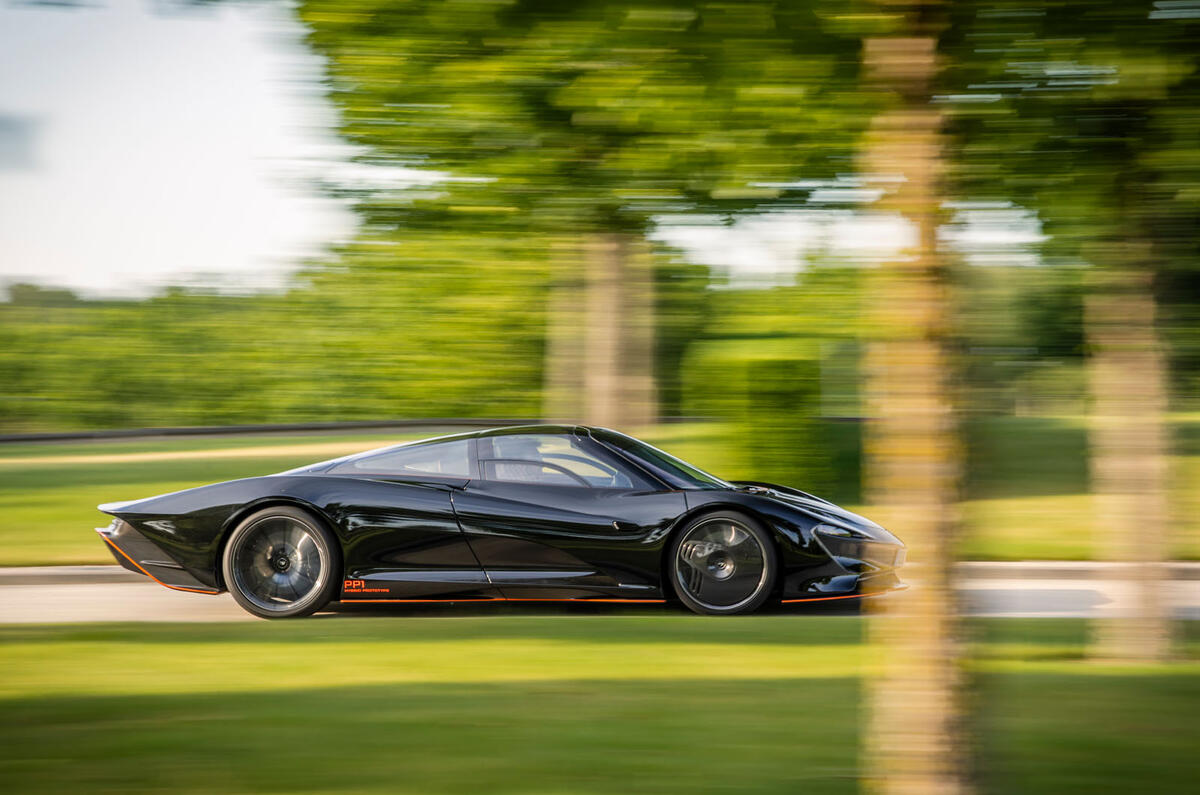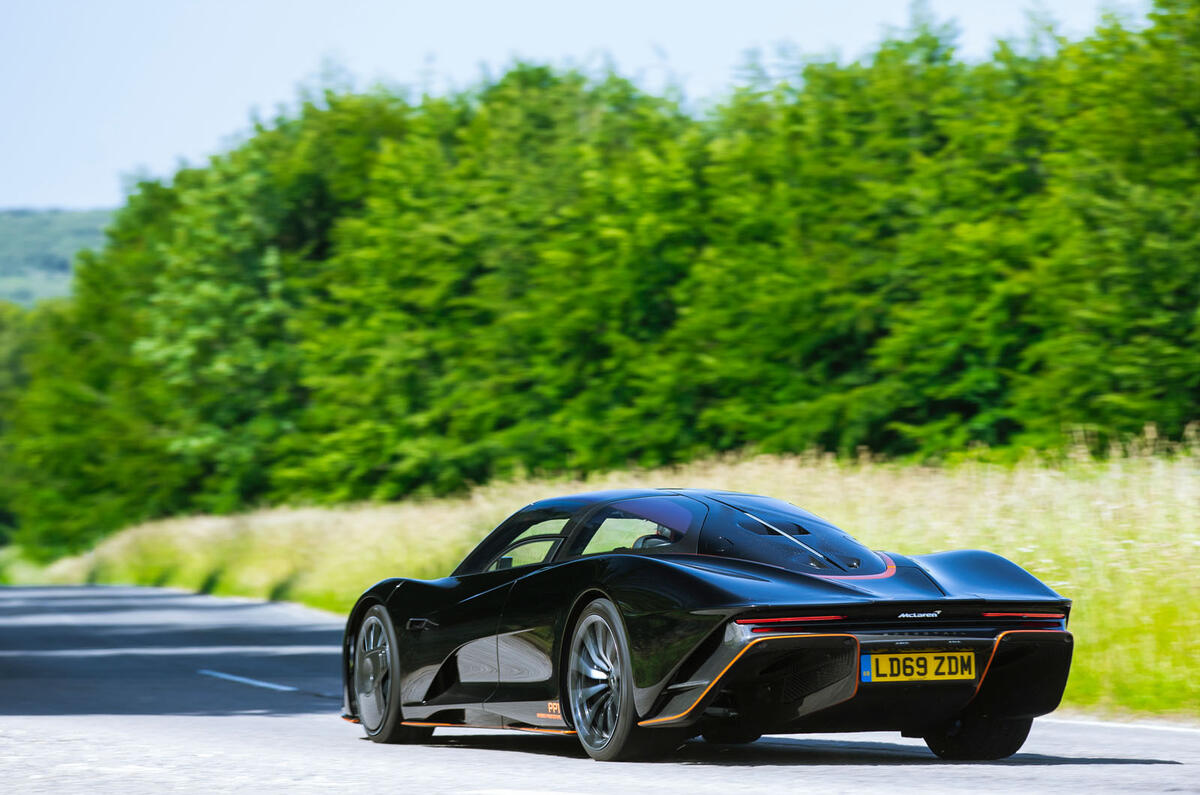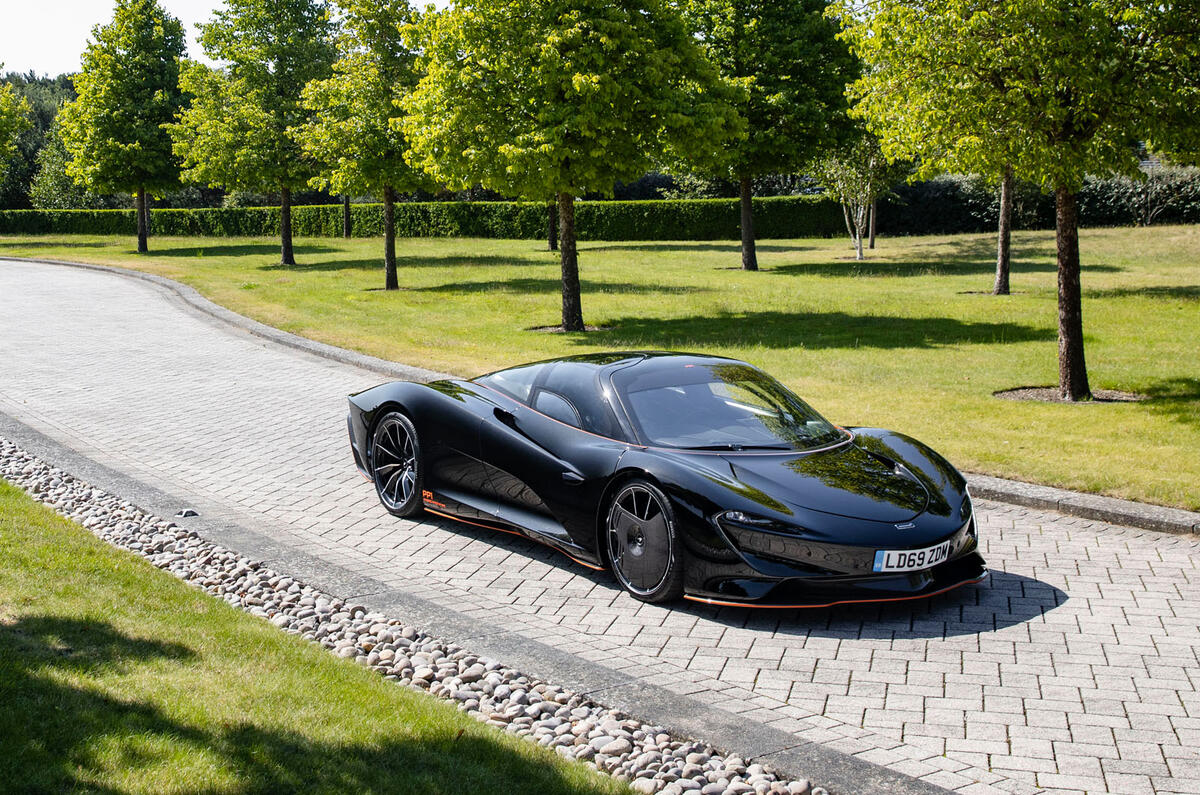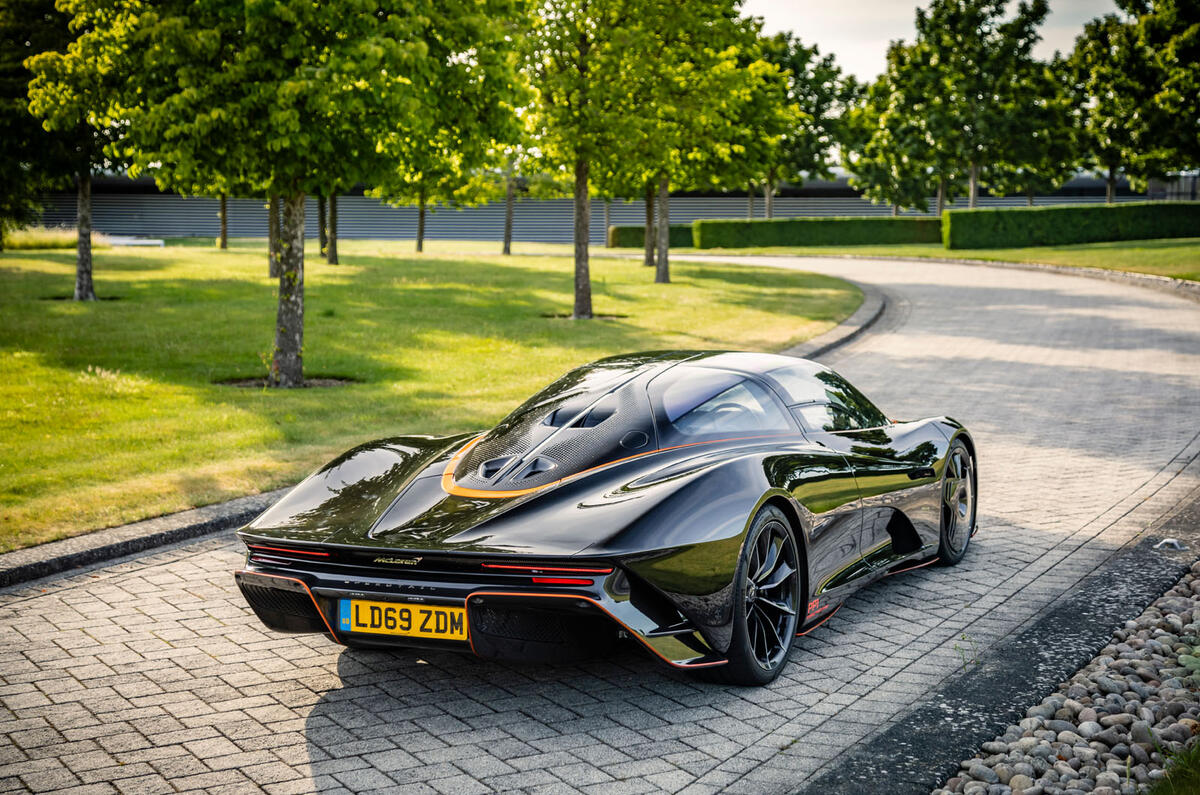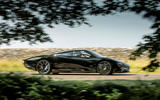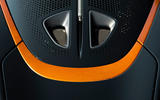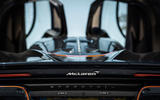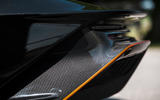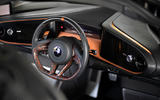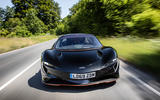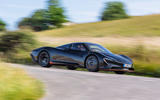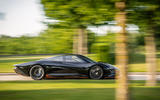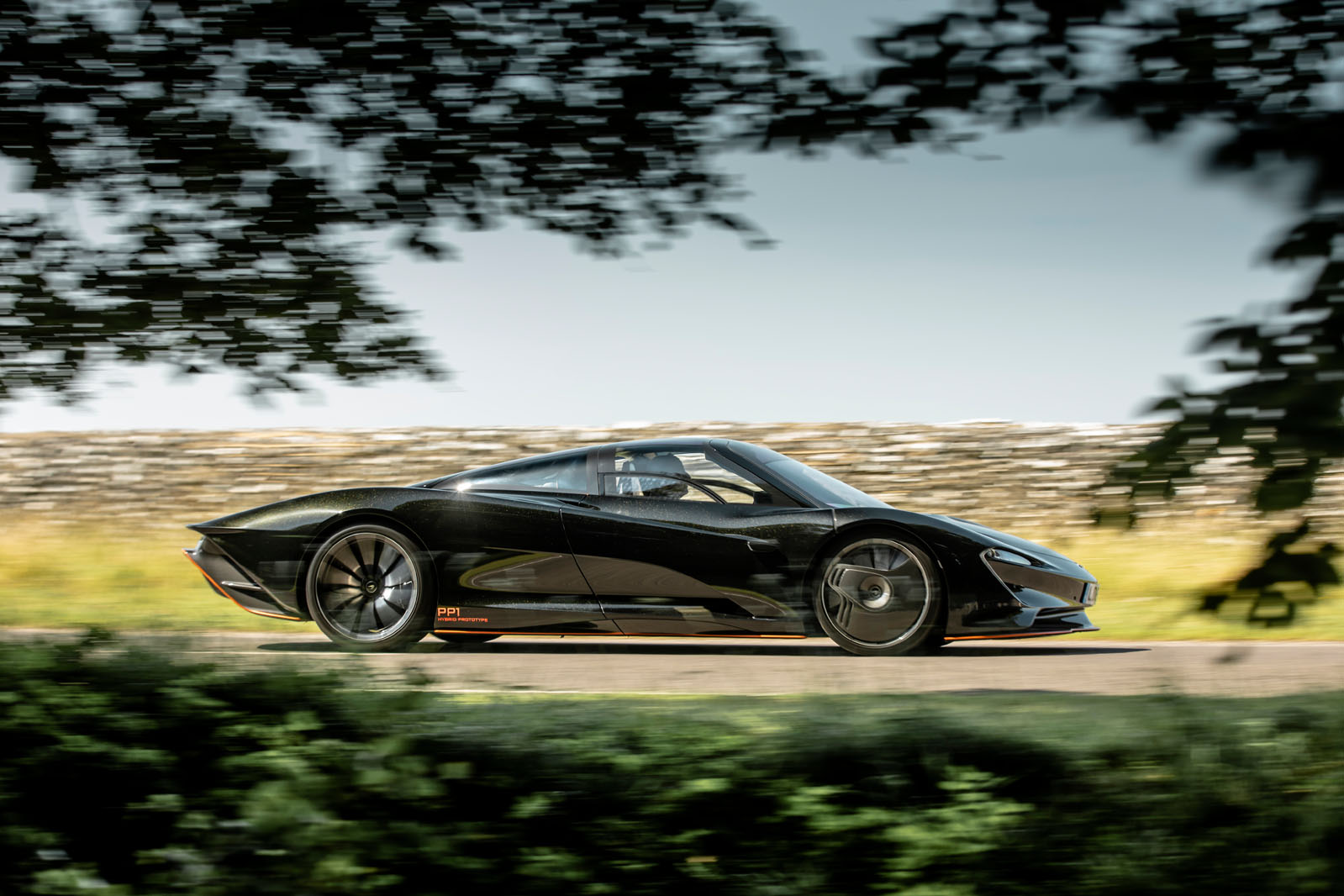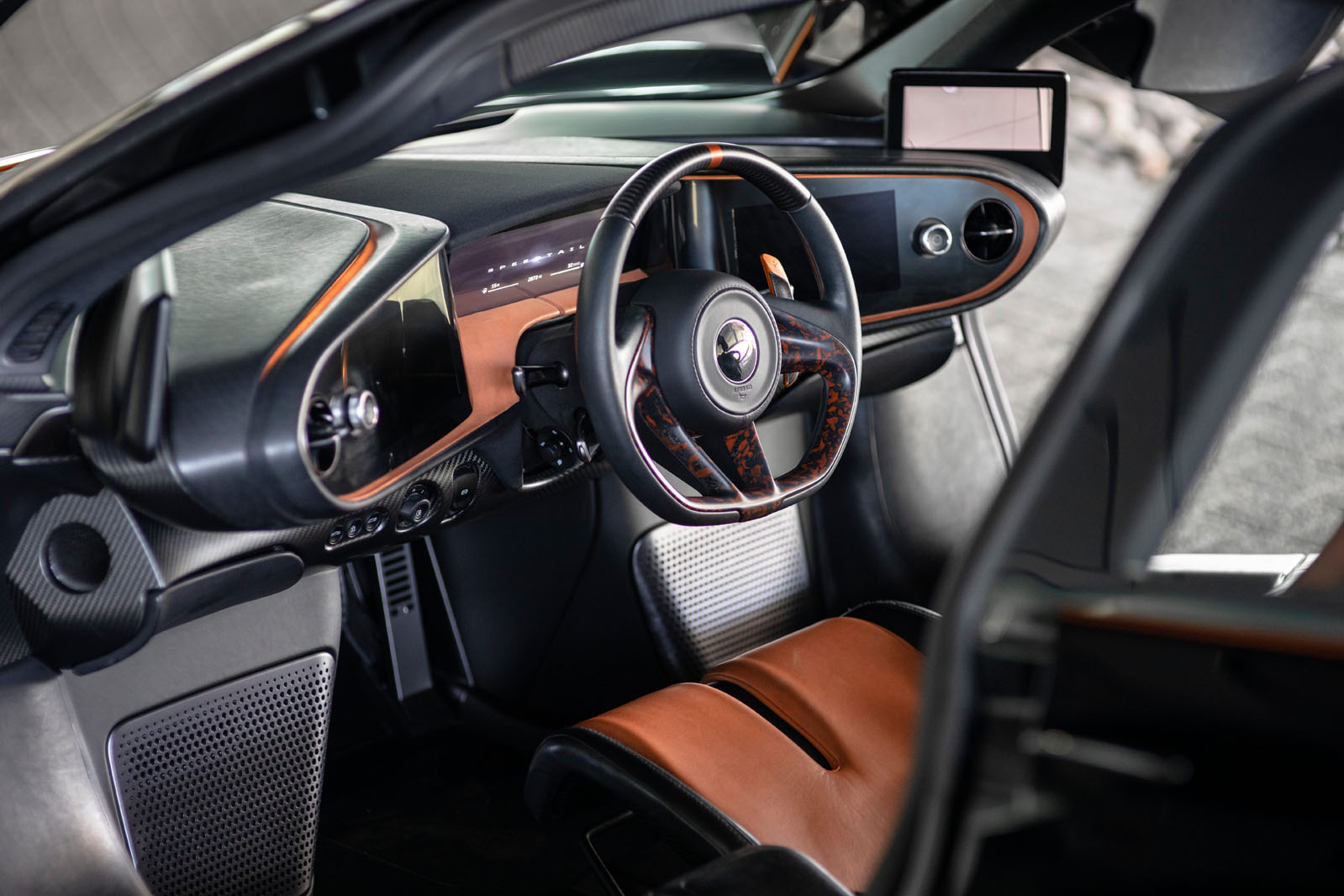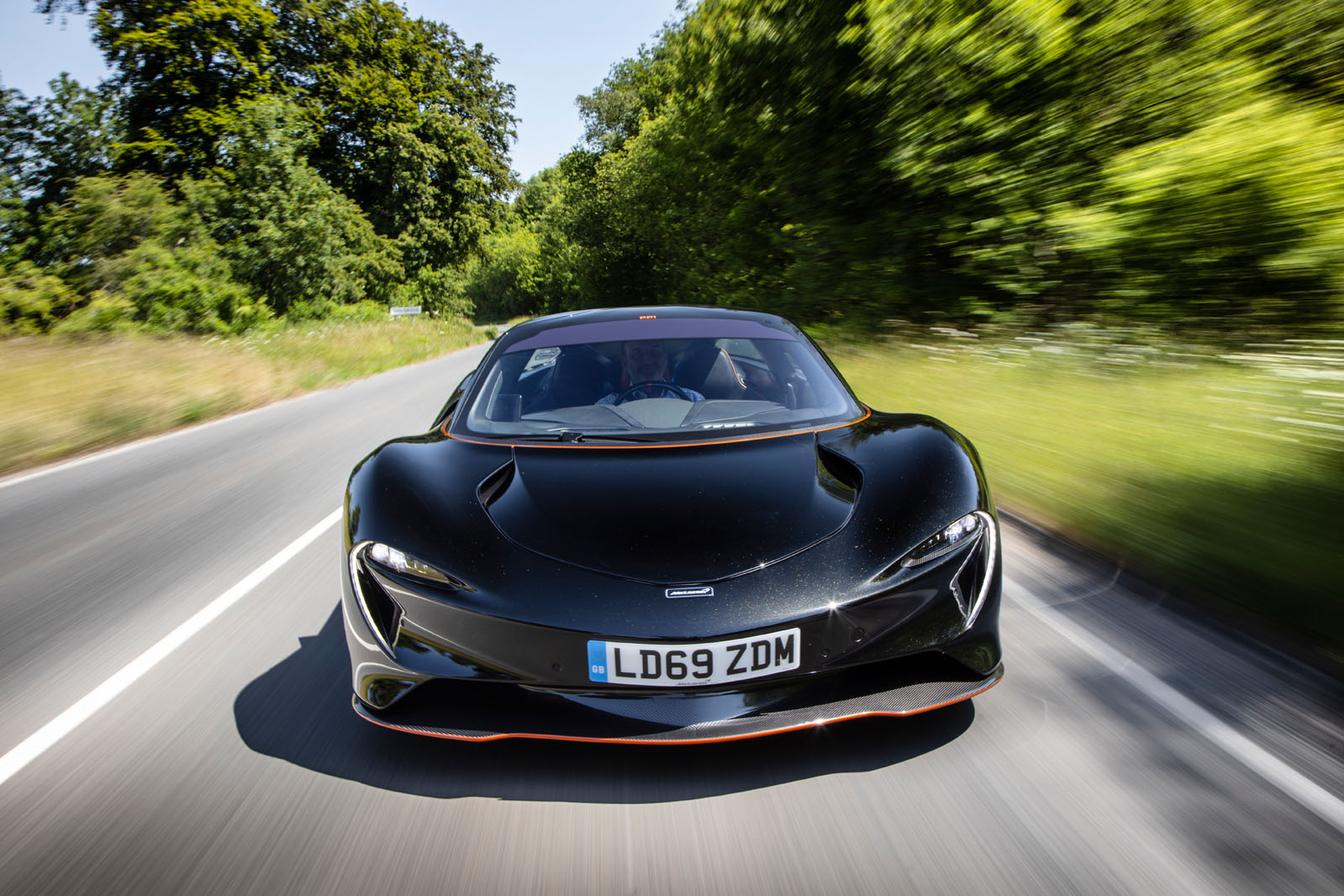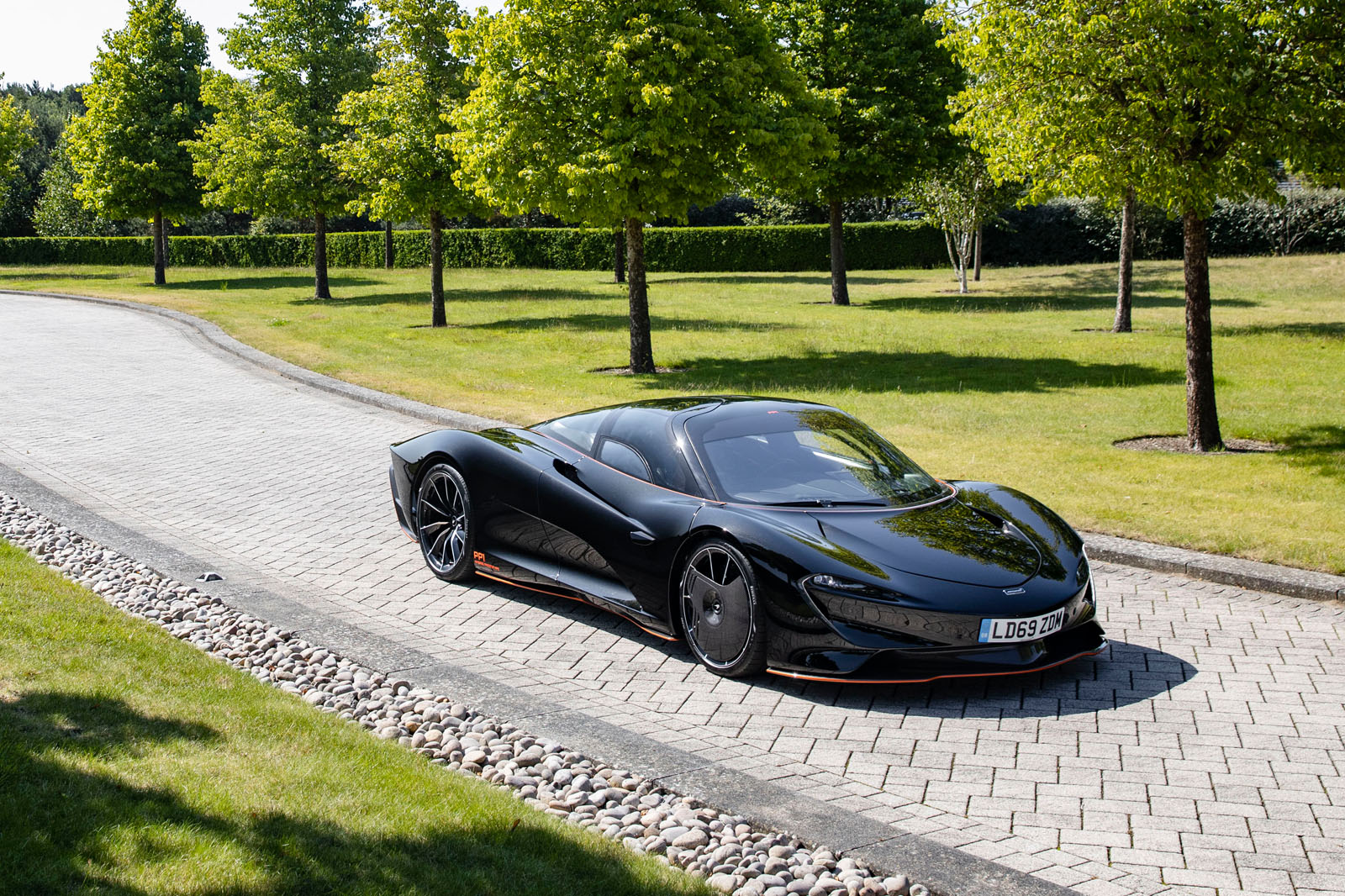The Speedtail starts like any other McLaren and makes the same noise – which is disappointing. Given it has a flat-plane-crank V8 like every other McLaren, I’m not sure what I was expecting, but its hard, gruff voice isn’t that of a GT, hyper or otherwise.
No, of course McLaren couldn’t package another cylinder at each corner, and for just 106 units it would be ruinously expensive even if it could. But if ever a car required a V12 (dare I say like that in the F1?), surely a hyper-GT is it.
It’s hilarious how effortlessly this 1055bhp car (thanks to the almost combined efforts of its 747bhp 4.0-litre engine and a 309bhp-plus electric motor) slips into the real world. Because the hybrid drive is set purely for power provision, there’s no electric-only mode like in the P1, nor can you plug it in, although you can charge it through an induction pad built into the floor of the hermetically sealed, dehumidified vault you’ll undoubtedly have for it at home.
This also keeps the 12V system topped up, so there’s no need for a trickle-charger, which is a neat touch.
You need the car in Sport driving mode, otherwise you won’t be given the full 848lb ft of torque. And you can’t transmit 848lb ft to the road through two 315mm-wide patches of rubber until they’re rotating extremely quickly. So what happens is different to anything almost anyone has ever experienced in a road car, and it happens at a different speed, too.
It’s acceleration, but not as we know it. This isn’t a bludgeon like the Chiron, using brute force to shatter the air around it, but a bullet, so slim, stealthy and slippery that the air scarcely notices it’s being penetrated. This is why the only performance figure McLaren quotes is a Bugatti-busting 13.0sec run from 0-186mph, despite the evident traction limitations. So when your nerve fails and you finally lift, the car, instead of headbutting an aerodynamic wall, barely slows.
So you need good brakes and, once you’ve got through the pedal’s initially quite dead feel, my goodness have you got them.
Of course this car can hit 250mph, and it would have been capable of a whole lot more had McLaren not concluded that it wasn’t worth the extra ride-wrecking unsprung mass (heavier wheels, tyres, suspension and brakes) required to make it safe at speeds nobody would ever reach.
That headline-grabbing top speed is a distraction. In essence, the Speedtail is just a wondrous car to guide along a good road. You don’t have to be doing 250mph to savour its looks, interior, driving position, displays, ride or handling. You don’t even need to be doing 150mph.




